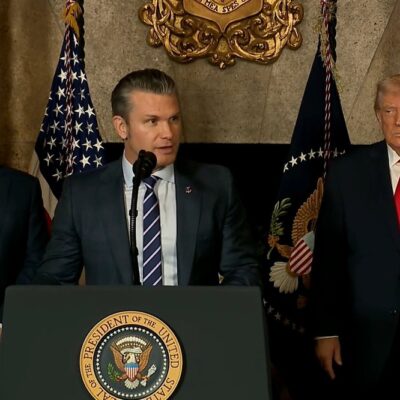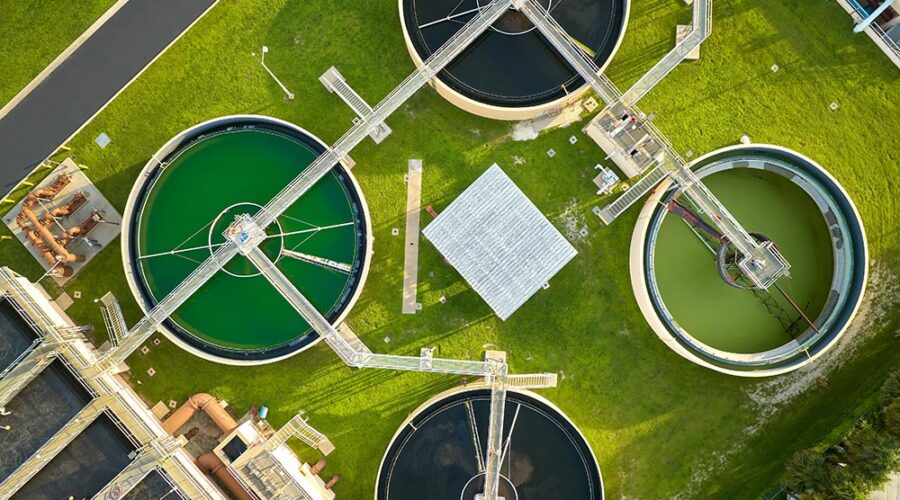ENVIRONMENT AND CLIMATE
New carbon-based technology from Qingdao University offers scalable, metal-free solution to persistent water pollution
Researchers at Qingdao University have developed a new, environmentally friendly catalyst derived from marine biomass that effectively removes antibiotic contaminants from wastewater, addressing a growing global challenge associated with pharmaceutical pollution and antibiotic resistance.
Antibiotics such as norfloxacin are widely detected in rivers, lakes, and wastewater streams because they are difficult to degrade by conventional treatment technologies. These persistent residues can disrupt aquatic ecosystems and contribute to the spread of antibiotic-resistant bacteria, creating long-term risks for both environmental and public health.
The new approach converts sulfur-rich marine biomass into a high-performance porous carbon catalyst that accelerates antibiotic degradation without relying on metals or toxic additives. The research, published in the journal Biochar X, demonstrates how naturally abundant sea-derived materials can be repurposed into advanced tools for water purification.
The catalyst is produced by combining κ-carrageenan, a polysaccharide extracted from red seaweed, with nitrogen-rich compounds and activating it through a controlled thermal process. The resulting material features an extremely high surface area and a porous structure that creates numerous active sites for chemical reactions. When used in conjunction with peroxymonosulfate, a common oxidizing agent, the catalyst rapidly degrades antibiotic molecules in water.
In laboratory tests, the material removed more than 97 percent of norfloxacin within 90 minutes and achieved substantial mineralization, meaning the antibiotic compounds were broken down into simpler, less harmful substances rather than merely transformed. The catalyst also maintained strong performance in water containing competing ions and organic matter, conditions that typically reduce the efficiency of advanced oxidation processes.
A key advantage of the technology is that it is entirely metal-free. Many existing catalytic systems rely on transition metals that can leach into water and create secondary…
CURRENT EDITION
RH
WASHINGTON BUREAU
Trump Announces New Class of U.S. Battleships as Navy Pivots Toward Large Surface Combatants
On December 22, President Donald J. Trump announced plans for the U.S. Navy to develop
Federal Law Enforcement Officers Association Applauds Passage of Priority Police Week Bills in NDAA
The Federal Law Enforcement Officers Association (FLEOA) welcomed the inclusion of several of its top
Danbury, Connecticut Awarded Nearly $3.5 Million in Landmark PFAS Settlement to Safeguard Public Water Supply

The City of Danbury is set to receive a nearly $3.5 million settlement as part of a nationwide legal agreement aimed at addressing contamination of public water supplies by PFAS, commonly referred to as “forever chemicals.” This significant settlement is part of multibillion-dollar deals reached with major corporations, including…
The Rise of Green Careers: How Every Industry Is Now Part of the Sustainability Economy

Sustainability used to live in silos — a department, a consultant, a checkbox. Now it’s cracking open the walls of every industry. From logistics to law firms, data science to design, environmental responsibility is no longer a bonus trait — it’s part of the job description. And with that…
University of Georgia Ecologists Identify Two New Black Bass Species: Bartram’s and Altamaha Bass

A team of ecologists from the University of Georgia has made a significant discovery, identifying two new species of black bass: Bartram’s bass and Altamaha bass. This breakthrough is detailed in a new paper, expanding the understanding of these riverine fish.
Though these species are newly described, they have been…
Innovative Living Sensor Detects Microplastics in Water Samples

Microplastics, tiny plastic particles often too small to see, have become a significant environmental concern found in our air, soil, and water. Measuring their presence is crucial for directing cleanup efforts, yet current detection methods are often slow, costly, or overly complex. In a groundbreaking study published in ACS…
Frontier Galvanizing has spent over 75 years setting the standard for corrosion protection, with a commitment to environmental innovation that has shaped the future of hot-dip galvanizing. The company’s work goes far beyond fortifying steel for bridges, stadiums, or utility systems, employing processes that actively reduce energy consumption, minimize chemical waste, and lower the ecological impact—all while maintaining the durability and quality that define Frontier Galvanizing’s reputation.
Zinc: Recyclability and the Circular Economy
Zinc is ideally suited to environmentally responsible galvanizing due to its complete recyclability. Most other commonly used coatings require repeated replacement. In contrast, zinc can be recovered and reused endlessly without losing its protective qualities.
Frontier Galvanizing incorporates recycled zinc into its operations whenever possible, thereby reducing reliance on raw materials. This reflects the company’s long-standing commitment to environmentally conscious practices while delivering steel solutions that meet rigorous performance standards for both domestic and international projects.
Enhancing Energy Efficiency Through Heat Recovery
Modern galvanizing typically involves several energy-intensive processes. In response, Frontier Galvanizing has progressively integrated technologies intended to reduce consumption. These include precision temperature control, optimized bath circulation, and automated handling, which minimizes energy loss during coating.
The company also employs heat recovery technologies that capture residual heat from galvanizing…
Bottled water has become an everyday item for millions, especially in the U.S., where perceptions of purity, safety, and convenience fuel its high demand. Marketing strategies have played a major role, often portraying bottled water as sourced from pristine natural environments, appealing to health-conscious consumers. However, the growing popularity of bottled water has brought attention to the presence of microplastics—tiny plastic particles that pose health and environmental risks.
As Brian Kashman explains, these particles can originate from packaging materials or the bottling process itself. Research has shown that microplastics are alarmingly prevalent in bottled water, but the long-term health effects remain unclear. While ongoing studies aim to clarify the risks, individuals are encouraged to explore safer, more sustainable alternatives.
Why Bottled Water Remains Popular
Bottled water continues to dominate beverage sales in the U.S., with millions choosing it daily over other options. Many consumers associate it with cleanliness and safety, believing it to be more trustworthy than tap water.
Brands often highlight mountain springs or glacier sources on their labels, reinforcing the idea of purity. Combined with the convenience of a sealed, portable container, bottled water becomes a default choice for people on the go. In urban areas with questionable tap water…
Mendenhall Glacier’s Seasonal Flood Mitigation Efforts Yield Positive Results

Last week, Juneau faced the annual challenge of the Mendenhall Glacier’s lake outburst flood as glacial waters streamed towards the city. Thankfully, extensive preparations made by the U.S. Army Corps of Engineers (USACE) helped mitigate the potential threats to local infrastructure and public safety.
In an effort to protect the…
New Research Highlights Strategies for Water Conservation and Pollution Mitigation

Water is fundamental to life on Earth, supporting everything from cellular processes to complex ecosystems. Recent studies published in ACS journals offer valuable insights aimed at protecting our natural water sources and ensuring access to safe drinking water for a growing population.
One of the pressing issues addressed in these…
U.S. Department of Energy Report Challenges Conventional Climate Change Narratives

In a striking new report, the U.S. Department of Energy (DOE) has evaluated existing literature and data on the impact of Greenhouse Gas (GHG) emissions on climate change, positing that the economic damages from CO2-induced warming may be less severe than widely believed. The report, titled *A Critical…
Global Leaders Fail to Enact Deep-Sea Mining Moratorium at ISA Assembly

Weeks after government leaders pledged to take significant action for ocean protection at the UN Ocean Conference in Nice in June 2025, the International Seabed Authority (ISA) Council and Assembly concluded without a moratorium on deep-sea mining. This has resulted in a growing discrepancy between promised environmental stewardship and…
Nations, NGOs, and Indigenous organizations unite to end bottom trawling on seamounts by 2026, marking a major victory for deep-sea conservation
By Tina Geiger / Staff WriterThe International Union for Conservation of Nature (IUCN) has reached a defining moment in global ocean governance, as delegates at the 2025 World Conservation Congress (WCC) overwhelmingly approved a motion to phase out destructive fishing practices on seamounts by the end of 2026.
Motion 032, spearheaded by the Deep Sea Conservation Coalition (DSCC) and led by WWF Australia, calls for an end to bottom trawling on seamounts in international waters. The proposal passed with near-unanimous support — winning 95% of votes from States and government agencies and an extraordinary 99% from NGOs and Indigenous Peoples’ organizations.
“This is a tangible step toward ocean protection at a global scale,” said Bronwen Golder, Global Seamounts Campaign Director at the DSCC. “With the High Seas Treaty now ratified, 2030’s goal to protect 30% of the ocean fast approaching, and next year’s UN Bottom Fisheries Review, this is a critical moment to prioritize seamount protection worldwide.”
Seamounts — underwater mountains rising thousands of meters from the ocean floor — are among the most biodiverse ecosystems on Earth. They provide feeding grounds and habitats for deep-sea corals, sponges, whales, sharks, and turtles. Yet for decades, industrial bottom trawling has devastated these fragile ecosystems, destroying ancient coral formations and threatening countless marine species.
The motion draws upon two decades of scientific evidence confirming that bottom trawling causes “widespread, irreversible degradation” to deep-sea environments. The United Nations’ Second World Ocean Assessment (2021) identified bottom trawling as the single greatest threat to seamount ecosystems.
Kate Noble, Senior Manager for Oceans Policy at WWF Australia, hailed…
Global Call for Moratorium on Deep-Sea Mining to Protect Ocean Ecosystems and Future Generations

The Deep Sea Conservation Coalition (DSCC) is calling for the international community to urgently establish a moratorium on destructive deep-sea mining to prevent irreversible harm to ocean ecosystems and protect the rights of current and future generations.
Over the next three weeks, States will convene in Kingston, Jamaica, for…
New Research Highlights Importance of Clear Regulations in Agricultural Gene Editing

A recent paper from the University of Adelaide is drawing attention to the crucial role of regulatory frameworks in agricultural gene editing. While some scientists argue that current regulations are overly restrictive, the authors emphasize the need for clear guidelines to ensure these emerging technologies are applied safely and…
Bodybuilding in Ancient Times: How the Sea Anemone Got Its Back

A new study from the University of Vienna reveals that sea anemones use a molecular mechanism known from bilaterian animals to form their back-to-belly body axis. This mechanism (“BMP shuttling”) enables cells to organize themselves during development by interpreting signaling gradients. The findings, published in Science Advances, suggest that…
A novel Hox gene promoter fuels the evolution of adaptive phenotypic plasticity in wing eyespots of satyrid butterflies
Researchers from the National University of Singapore (NUS) have made a groundbreaking discovery about the wing patterns of tropical butterflies, revealing a simple DNA “switch” that allows them to adjust the size of their wing eyespots in response to seasonal temperature changes. This critical finding sheds light on the evolution of environmental sensitivity in insects and could have implications for understanding adaptation in a rapidly changing climate.
Insects are known for their remarkable adaptability to their surroundings, with some species even changing their colors with the seasons. This phenomenon, known as seasonal plasticity, plays a crucial role in their survival; however, the evolutionary origins of this adaptability have remained enigmatic until now.
Led by Professor Antónia Monteiro from the NUS Department of Biological Sciences, the research team identified a specific DNA sequence that helps certain butterflies switch their wing patterns between wet and dry seasons. The study, published in the journal Nature Ecology & Evolution on October 24, 2025, focuses on the African butterfly species Bicyclus anynana, which exhibits strikingly different appearances depending on the season.
During the wet season, these butterflies develop larger eyespots on their wings, while in the dry season, their eyespots are…
EDITOR'S
CHOICE
Kunming Biodiversity Fund Endorses 22 Landmark Projects to Combat Biodiversity Loss
In Memoriam: Kristina Washer, 30, Environmental Science Pioneer and Advocate for Planetary Health

The environmental science community mourns the loss of Kristina Comley Washer, a gifted and compassionate environmental scientist whose life was tragically cut short by Acute Myeloid Leukemia (AML) on June 9, 2025. She was 30 years old.
Kristina was more than a scholar—she was a force for change. A master’s…
New Study Reveals Alarming Rise in Methane Emissions Linked to Arctic Warming

A groundbreaking study published in the prestigious journal Nature highlights the escalating methane emissions from the Arctic, underscoring a troubling feedback loop that may further exacerbate climate change. Researchers from the University of Colorado Boulder’s Cooperative Institute for Research in Environmental Sciences (CIRES) reported significant findings that reveal the…
Climate Change Increases Severity of Obstructive Sleep Apnea

Rising temperatures increase the severity of obstructive sleep apnea (OSA), according to a large new study published at the ATS 2025 International Conference. The study also found that, under the most likely climate change scenarios, the societal burden of OSA is expected to double in most countries over…













